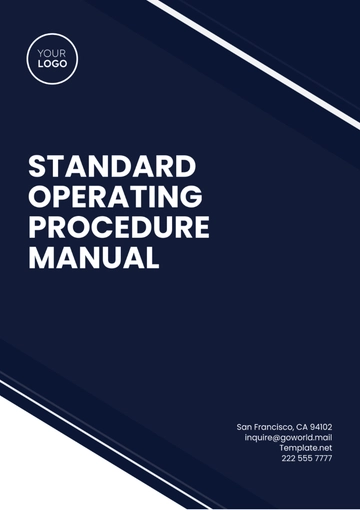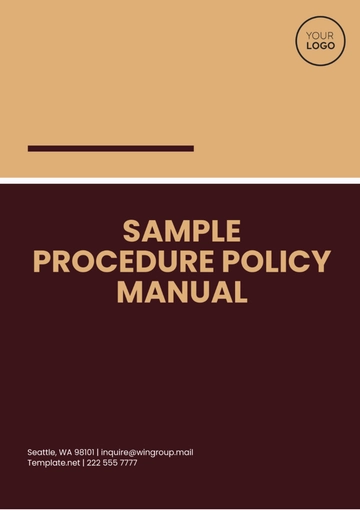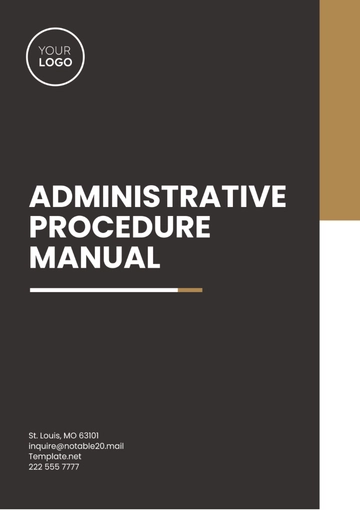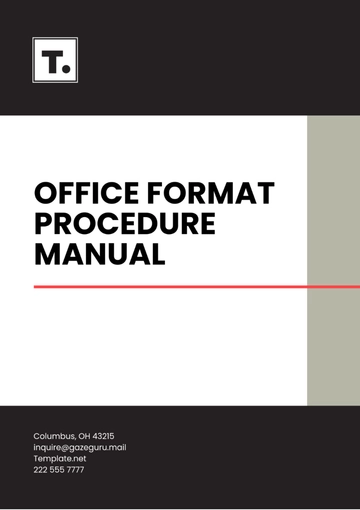Free Affirmative Action Compliance Manual HR

Introduction
This Affirmative Action Compliance Manual is an integral resource created to guide [Company Name] in the implementation, management, and ongoing assessment of an effective Affirmative Action Program (AAP). Adhering to AAP is not merely a matter of legal obligation but a moral and ethical imperative that aligns seamlessly with our organizational values. In recognizing the value of a workforce that reflects a wide spectrum of backgrounds, perspectives, and skills, [Company Name] is committed to fostering an environment where diversity and inclusion are more than buzzwords—they are institutional pillars that drive innovation, productivity, and mutual respect among all stakeholders.
The aim of this manual is to offer a comprehensive framework to help our executives, managers, human resources professionals, and all employees understand their roles and responsibilities in realizing an inclusive and fair workplace. By doing so, we are not only complying with federal and state regulations but are also taking strides in becoming a model of diversity and inclusion in our industry. This commitment includes equal employment opportunities, unbiased recruitment processes, equitable advancement procedures, and an overall workplace atmosphere free of discrimination and harassment.
Understanding and implementing the practices laid out in this manual will contribute significantly to fulfilling the corporate social responsibilities of [Company Name]. It will also build our reputation as an employer of choice, one committed to equality and the career development of all its employees.
Purpose and Scope
The primary purpose of this Affirmative Action Compliance Manual is to provide a detailed framework for complying with local, state, and federal affirmative action regulations. These steps are delineated to ensure that [Company Name] not only meets legal standards but also actively promotes an environment characterized by diversity, equality, and inclusivity. The procedures and policies described herein are aimed at eliminating any form of discrimination based on race, color, religion, sex, national origin, disability, or veteran status, thereby fostering a workplace that values the contribution of every individual.
Beyond mere compliance with the law, the manual serves as a practical guide for how [Company Name] can achieve its diversity and inclusion objectives. It sets the standard for best practices in recruitment, retention, promotion, and employee development. These strategies are designed to provide equal opportunities for all employees and to create a workforce that mirrors the diversity of the communities we serve.
The scope of this manual is comprehensive and applies universally to all tiers within the organization. This includes full-time and part-time employees, temporary staff, contractors, freelancers, and business partners who are engaged in any capacity with [Company Name]. By covering a broad spectrum of stakeholders, this manual ensures that the tenets of affirmative action are upheld at all organizational levels, thereby ingraining these critical values into the very fabric of our corporate culture.
Policy Statement
At [Company Name], our commitment to equal employment opportunities is an integral part of our organizational DNA. We strive to build a workforce that not only meets but surpasses the standards of fairness, diversity, and inclusion. Our objective is to create a team that reflects the rich tapestry of the communities we operate in, recognizing that a diversified workforce is not just socially responsible, but also beneficial to our business. We understand that diversity brings in a wide array of perspectives, skills, and experiences, thereby enriching our culture, boosting innovation, and giving us a competitive edge in the marketplace.
We strongly believe that each individual should be evaluated and rewarded based on merit, skill, and performance, without regard to race, color, religion, sex, sexual orientation, gender identity, national origin, age, disability, veteran status, or any other characteristics protected by law. Our commitment extends beyond recruitment and hiring practices to encompass every facet of employment, including training, compensation, benefits, promotions, transfers, layoffs, and terminations.
Our dedication to equal employment opportunities is unwavering and non-negotiable. All managerial and supervisory staff are responsible for ensuring the effective implementation of this policy and are expected to lead by example. Any acts of discrimination or harassment are unacceptable and will be dealt with promptly, with appropriate actions taken to rectify any issues.
This policy statement is a manifestation of [Company Name]'s overarching aim to be a socially responsible and ethical employer. We are fully invested in maintaining an inclusive environment where every employee feels valued, respected, and empowered to reach their fullest potential.
Responsibilities
The success of any Affirmative Action Program (AAP) is contingent upon the active participation and commitment of all levels of an organization. This chapter outlines the distinct responsibilities that various groups within [Company Name] hold in ensuring that our AAP is both effective and compliant. The roles are categorized under Executives, Human Resources, and Employees, each contributing in their unique ways to the realization of a truly inclusive work environment.
Executives
Executives play a critical role in steering the organization towards full compliance with all applicable federal and state laws regarding affirmative action and equal employment opportunities. Leadership's endorsement and active support set the tone for the entire company, signaling that diversity and inclusion are organizational priorities. Executives are responsible for allocating sufficient resources—be it time, personnel, or financial investments—to ensure that all affirmative action initiatives are effectively implemented and monitored. Furthermore, they must also be prepared to make organizational changes, if needed, based on periodic reviews and audits of the AAP.
Human Resources
The Human Resources department serves as the operational arm for carrying out the objectives laid out in our Affirmative Action Program. HR is responsible for conducting regular internal audits to assess the state of diversity and inclusion within the company. These audits evaluate everything from hiring practices to workplace culture, ensuring that all activities align with AAP objectives and legal requirements. Subsequently, HR also handles the internal reporting, presenting audit findings to executives and suggesting actionable steps for continuous improvement. The department also maintains all records, documents, and reports that may be required for compliance checks by regulatory bodies.
Employees
Employees form the backbone of any successful Affirmative Action Program. While executives and HR departments set policies and monitor compliance, the everyday experiences of individual employees are the ultimate test of a program's effectiveness. Employees are strongly encouraged to report any incidents of discrimination, harassment, or unfair treatment they witness or experience. Such reporting can be done anonymously and will be treated with the utmost confidentiality. It is everyone's responsibility to contribute to a workplace culture that is free from discrimination, and employees play a crucial role in holding the company accountable to its own standards. Reports from employees serve as invaluable inputs for HR audits and help in the ongoing refinement of our AAP.
Affirmative Action Procedures
The procedures outlined in this chapter serve as the operational guidelines that support the core principles and policies of [Company Name]'s Affirmative Action Program (AAP). These procedures are designed to put into practice the commitments we have made towards diversity, inclusivity, and equal opportunity. They cover key areas of employment within the organization, namely Recruitment, Promotion, and Training, and provide actionable steps for implementation. Compliance with these procedures is mandatory and is subject to regular monitoring and audit by the Human Resources department.
1. Recruitment
At [Company Name], our recruitment process aims to attract a diverse pool of candidates. One of the fundamental steps in this process is to include the phrase "Equal Opportunity Employer" (EOE) in all job postings, both internal and external. This signals to prospective candidates that we are committed to providing a fair, inclusive, and discrimination-free environment. It encourages applicants from all backgrounds, cultures, and communities to consider joining our organization. Moreover, Human Resources should also actively seek partnerships with job boards and recruitment agencies that focus on minority groups to ensure that our vacancies are accessible to a broad spectrum of job seekers.
2. Promotion
Promotions within [Company Name] are based on merit, skill, and performance, rather than any discriminatory criteria. To ensure that our performance evaluations are unbiased, we utilize standardized appraisal forms and metrics that are applied uniformly across the organization. Managers are trained to focus on specific performance indicators rather than subjective judgments. This helps to remove any unconscious biases that may inadvertently affect the evaluation process. Furthermore, all promotional decisions are reviewed by a committee, which includes representatives from Human Resources, to guarantee that affirmative action principles have been upheld.
3. Training
Training is a cornerstone in the edifice of our Affirmative Action Program. At [Company Name], we conduct regular training programs aimed at fostering a culture of diversity and inclusion. These training sessions are mandatory for all employees and cover a variety of topics such as unconscious bias, cultural sensitivity, and legal obligations related to affirmative action. Not only do these programs educate our workforce, but they also serve as a platform for open dialogue, allowing employees to share their experiences and perspectives. The goal is to continuously nurture an environment where every individual feels valued, respected, and included.
Reporting and Record-Keeping
This chapter elaborates on the essential processes of Reporting and Record-Keeping that underpin the effective management of [Company Name]'s Affirmative Action Program (AAP). These activities serve multiple functions—they not only ensure compliance with relevant laws and regulations but also provide tangible data that can be analyzed for ongoing improvements in our diversity and inclusion initiatives. While the Human Resources department is primarily responsible for these tasks, it is essential for the entire organization to be cognizant of these procedures to contribute to a fully integrated and effective AAP.
Section | Description | Responsible Party |
Reporting | Quarterly reporting on affirmative action progress, including metrics like employee demographics, instances of discrimination or harassment, and promotion and retention rates. | Human Resources |
Record-Keeping | Maintain records related to affirmative action, including employee records, training materials, and internal audit reports, for a minimum of three years to comply with legal requirements and for internal analysis. | Human Resources |
Reporting
Human Resources is tasked with the critical role of compiling quarterly reports that provide an overview of the progress made in the affirmative action initiatives. These reports should include diverse metrics like employee demographics, breakdowns of hiring and promotion decisions, incidents of discrimination or harassment, and training efficacy. By maintaining regular reporting intervals, the company can closely monitor the program's effectiveness and make data-driven decisions for continual improvements. These reports should be shared with key stakeholders, including executives and managerial staff, to maintain transparency and collective accountability.
Record-Keeping
In accordance with legal requirements, Human Resources must also maintain a comprehensive set of records related to affirmative action. This includes, but is not limited to, individual employee records, training materials used in diversity and inclusion programs, and reports from internal or external audits. These records must be securely stored and easily accessible for a minimum of three years. This not only helps to demonstrate compliance in case of any external reviews but also provides an invaluable resource for internal analysis, enabling the company to assess the long-term impact of its affirmative action initiatives.
Monitoring and Auditing
This Affirmative Action Compliance Manual is dedicated to outlining the mechanisms in place for overseeing the implementation and effectiveness of [Company Name]'s Affirmative Action Program (AAP). Rigorous and consistent monitoring and auditing are indispensable to the success of any AAP. Without these processes, policies risk becoming empty words, failing to achieve the intended impact of creating an inclusive and equitable work environment.
Quarterly audits will be conducted to assess the state of compliance with the Affirmative Action Program across all levels and departments within [Company Name]. These audits serve multiple purposes. First, they aim to ensure that the company is adhering to all federal, state, and local regulations concerning affirmative action and equal employment opportunities. Second, they are a proactive approach to identifying potential areas of weakness or non-compliance within the organization, thus allowing for timely corrective measures. Third, they offer an opportunity for internal assessment to evaluate the overall effectiveness of the AAP in achieving its stated goals of fostering a diverse and inclusive workforce.
The audits will involve a thorough review of various components, such as recruitment and hiring practices, employee demographics, promotional decisions, training programs, and incident reports related to discrimination or harassment. This broad scope ensures a comprehensive understanding of how well the program's goals are being met.
Human Resources will be responsible for conducting these audits and generating reports that will be shared with executives and, where appropriate, other staff members. The report will not only highlight areas of compliance but also indicate where improvements can be made, providing actionable recommendations.
Non-compliance discovered during these audits is a serious matter and may lead to penalties, both internal and external. Internal penalties could range from disciplinary actions to restructuring responsibilities, while external penalties could include legal repercussions and fines. Therefore, adherence to the guidelines set forth in this manual is not optional but a crucial requirement for the smooth functioning and integrity of [Company Name].
By instituting a robust system of monitoring and auditing, [Company Name] demonstrates its unwavering commitment to upholding the principles of affirmative action and equal opportunity, thereby setting the standard for ethical and socially responsible business practices.
Enforcement and Penalties
Enforcement and Penalties is a critical component of this Affirmative Action Compliance Manual, serving as the framework for accountability within [Company Name]'s Affirmative Action Program (AAP). The effective implementation of any program is heavily dependent on the level of enforcement that backs it up, and our AAP is no exception. While the objective is to create an inclusive and diverse work environment, achieving this goal necessitates strict adherence to the procedures and policies outlined in this manual.
Non-compliance with these rules and guidelines is a severe breach of both our organizational ethos and, potentially, federal and state laws. To safeguard the effectiveness of our affirmative action initiatives, [Company Name] has a structured system for disciplinary actions that could be taken in the event of non-compliance. These actions are meant to correct the errant behavior, ensure immediate compliance, and deter future instances of non-compliance.
Disciplinary actions can range from verbal or written warnings for first-time or minor infractions to more severe repercussions like suspension or demotion for recurrent or egregious violations. In extreme cases, non-compliance may result in the termination of employment. The severity of the penalty is determined by the nature of the violation, its impact on the organization, and any previous history of non-compliance by the involved individual(s).
It is crucial to note that the Human Resources department will handle the investigation and implementation of disciplinary actions in collaboration with department heads or immediate supervisors. A fair and impartial process will be followed to ensure that the action taken is proportionate to the infraction. Documentation of all investigations, actions taken, and their outcomes will be meticulously maintained for both internal records and potential external audits.
Furthermore, it's not just internal penalties that are a concern. Non-compliance may also expose [Company Name] to legal repercussions, including substantial fines and reputational damage, which could have long-term negative implications for the business.
Enforcement mechanisms and potential penalties are not merely punitive measures but are primarily designed to fortify [Company Name]'s commitment to affirmative action. By making the stakes of non-compliance clear, this chapter serves to underscore the seriousness with which we approach our responsibilities as an equal opportunity employer.
Revision History
Revision Date | Changes Made | Revised By |
[Date] | Initial Release | [Names] |
- 100% Customizable, free editor
- Access 1 Million+ Templates, photo’s & graphics
- Download or share as a template
- Click and replace photos, graphics, text, backgrounds
- Resize, crop, AI write & more
- Access advanced editor
Introducing the Affirmative Action Compliance Manual HR Template from Template.net. This editable and customizable manual is a critical resource for ensuring your organization meets affirmative action requirements. Easily editable in our AI Editor tool, it offers HR professionals a detailed framework for compliance, policy development, and implementation strategies. An indispensable guide for maintaining adherence to legal standards and promoting workplace equality.





























